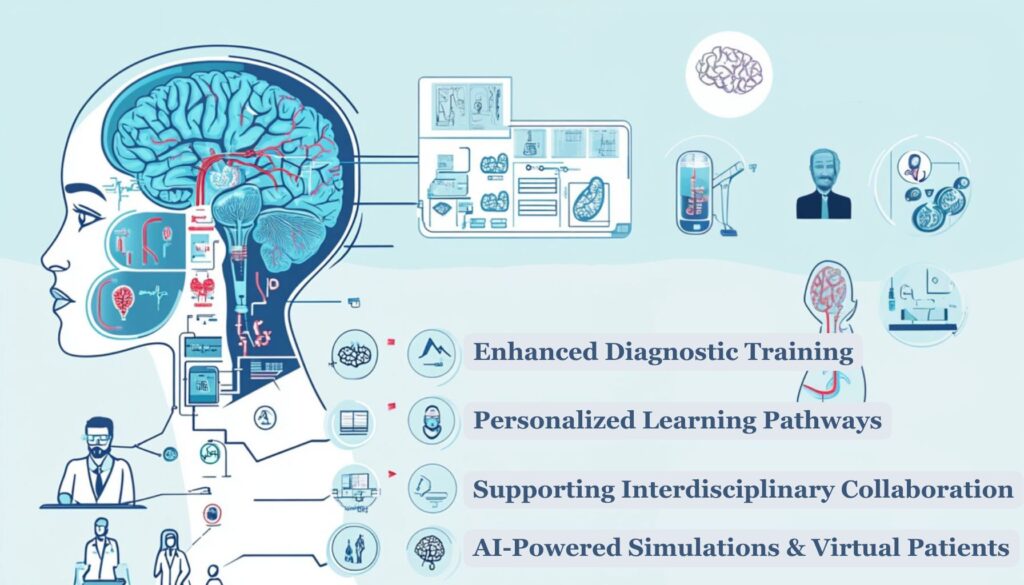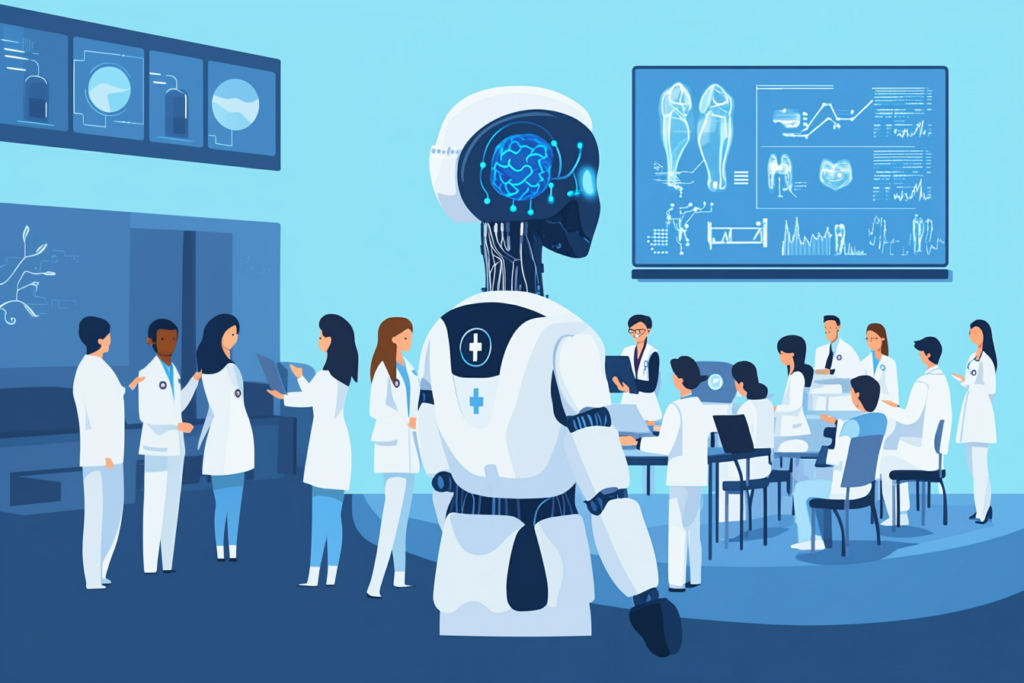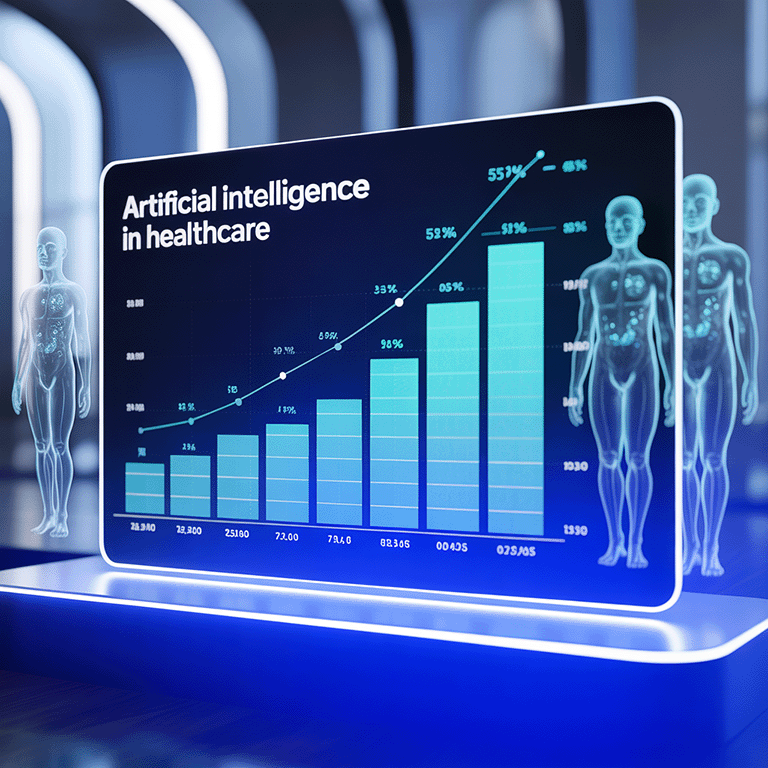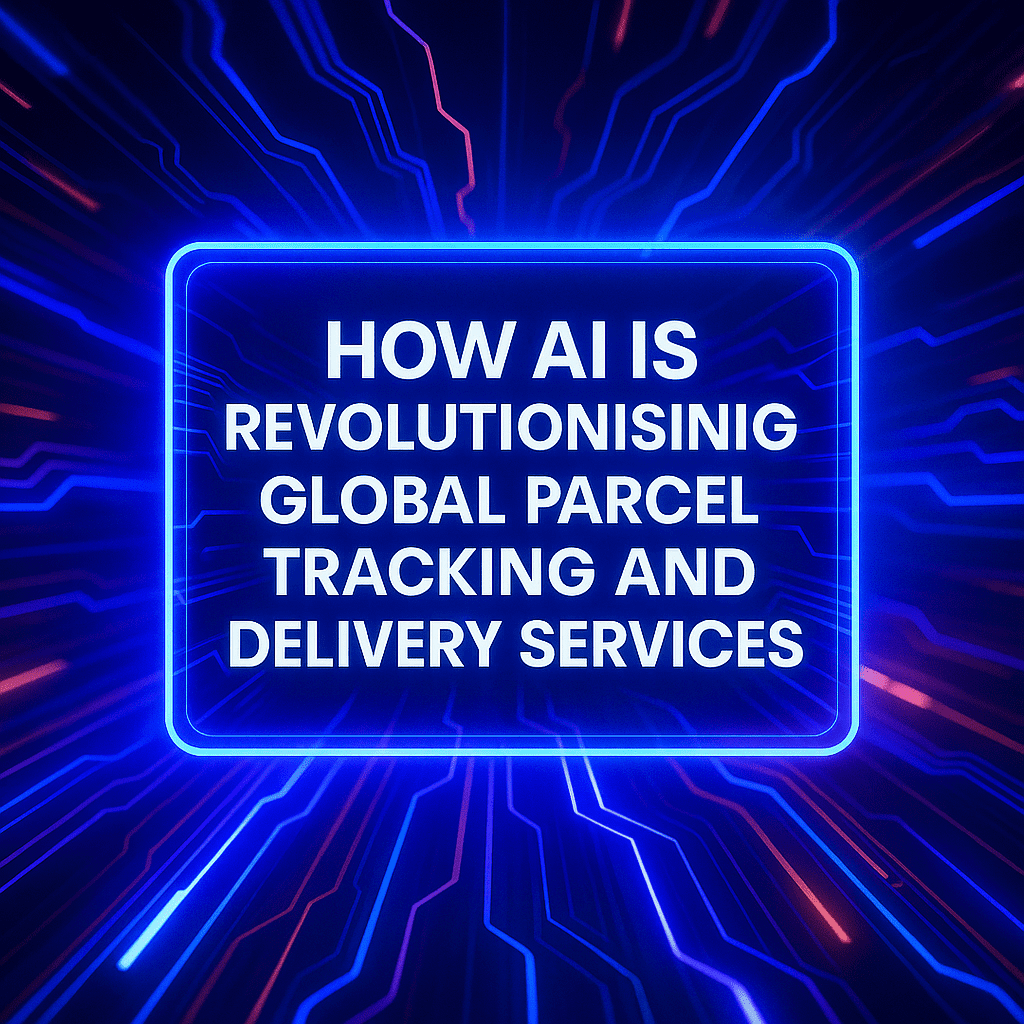What if medical training went beyond textbooks and mentors? What if it also relied on cutting-edge technology that mimics complex scenarios, tailors learning experiences, and gives instant feedback? This isn’t some fantasy in a far-off future. It is what is happening now. Artificial intelligence (AI) is changing how medical professionals learn and grow.
In medicine, where the stakes are incredibly high, there’s little room for error. Yet, traditional training methods often fall short in knowledge and preparedness. AI in medical education is changing this by bridging these gaps and offering unprecedented opportunities for medical professionals to enhance their skills and care for patients better.
In fact, AI-driven medical training programs can boost diagnostic accuracy by up to 30%. This highlights the potential for AI to significantly improve medical outcomes. In general, AI in learning redefines the entire process to meet modern healthcare demands.

Keep reading to discover how AI empowers medical professionals with personalized, cutting-edge training, equipping them to meet the challenges of today’s fast-paced medical landscape. Whether you’re an experienced medical professional or just starting your medical career, this could be your path to excellence.
The Evolution of Medical Training
A Historical Perspective
Medical training has a rich history rooted in tradition. Initially, it relied on apprenticeships, where aspiring doctors learned by observing and assisting seasoned ones. This method was effective but not standardized and consistent. By the late 19th and early 20th centuries, formal medical education became standard, with medical schools combining lectures, labs, and clinical practice.
Yet, traditional methods have inherent limitations. Studies revealed medical students often felt underprepared for clinical practice. Only 29% were confident in their diagnostic skills after graduation. This gap between theoretical knowledge and practical application is a significant challenge.

Introduction of Technology in Medical Training
When technology first appeared in medical training, it marked a turning point. In the late 20th century, digital tools, such as computer-assisted learning programs and online textbooks, began to supplement traditional methods by offering more flexible learning but were still mostly limited to passive forms of education.
The real shift came with advanced simulation technologies. High-fidelity simulators allowed students to practice procedures in a safe, controlled setting, closely mimicking real-life scenarios. Medical students trained with simulation-based methods gain procedural skills 20% faster than those trained through traditional methods.
Simulations marked the first taste of how technology could enhance medical training. Still, they couldn’t tackle all the problems. For example, students might miss out on rare or complex cases during their clinical rotations, limiting their exposure.
AI’s Emergence in Medical Training
Artificial intelligence in medical education offers capabilities beyond what traditional simulations can provide. AI-powered platforms analyze vast data, learn from it, and then apply that knowledge to create personalized training for medical professionals.
For instance, IBM Watson Health sifts through millions of medical records and research papers to provide doctors with the most relevant information tailored to their patient’s needs. This technology is also being adapted for training purposes.
Dr. Eric Topol, a leading cardiologist and author of Deep Medicine, states, when comparing the work of real doctors and GPT-4, “the chatbot did as well or better than the expert master clinicians in making the diagnosis.”
A notable example of AI in action is its use in diagnostic training. Studies find that when medical students use AI medical technologies to interpret diagnostic images, their accuracy jumps. AI systems quickly analyze images, compare them with millions of other cases, and provide suggestions that help trainees learn faster and more accurately.
Moreover, AI in medical education can mimic various medical scenarios, even rare ones. Students might never encounter such cases during their training. Programs like Stanford Medicine leverage AI to create virtual patients with complex, evolving conditions. This lets students practice making diagnostic and treatment decisions in real time.
AI’s Role in Transforming Medical Education
Artificial intelligence in medical education is now crucial. The technology offers new solutions to old challenges. As medical knowledge and healthcare expand and become more complex, AI fills the gaps traditional training methods leave. This section explores how AI is transforming medical education and mentions the best AI for medical students.

AI-Powered Simulations and Virtual Patients
This is one of the most transformative applications of AI in medical education. By creating better simulations and virtual patients, these AI-driven tools offer interactive, immersive learning that beats traditional methods.
AI in Simulations: AI-powered simulations use machine learning algorithms to create a dynamic, lifelike practice for medical students. Thus, they can practice procedures, diagnose conditions, and manage patient care. These simulations adapt to students’ actions while offering various outcomes and conditions, from common diseases to rare, complex cases. Read our blog to learn the benefits and see examples of ML in healthcare.
A study published in The BMJ highlighted improved clinical decision-making skills for students who trained with AI-driven simulations compared to those who relied on traditional simulation models. This boost is due to AI’s capacity for more nuanced, real-time scenarios, providing a more realistic and responsive learning environment.
Virtual Patients: AI in medical education is also reshaping the use of virtual patients—computer-generated characters that simulate real-life medical cases. They display a variety of symptoms, respond to treatments, and evolve as the case progresses. This setup allows students to hone their diagnostic and treatment skills safely.
According to research conducted by the NCBI, 52% of physicians agree that “clinical AI is more efficient than physicians.” The use of virtual patients also increases diagnostic accuracy among medical students. This is because AI can model complex physiological interactions and disease progressions, thus giving students a deeper understanding of patient care.
Personalized Learning Pathways
AI can analyze data and learn from user interactions. Consequently, it allows the creation of personalized learning experiences tailored to each medical student’s or professional’s individual needs. Such customization is a major step away from the uniform approach of traditional education.
Adaptive Learning: AI-driven platforms assess a student’s strengths, weaknesses, and learning style by analyzing their performance on various tasks and assessments. Based on this data, the AI adjusts the content’s difficulty, recommends additional resources, and even suggests alternative learning strategies.
A study published in the National Library of Medicine found that AI-based adaptive learning platforms enhance “students’ knowledge, skill development, and understanding of complex medical concepts.” These platforms provide a continuous feedback loop, thus helping students identify areas where they need improvement.
Continuous Assessment and Feedback: AI in medical education monitors student progress over time and provides immediate feedback. Thus, students stay on track and adjust their learning process without waiting for formal evaluations.
A recent study reports that 50% of students who received AI-generated feedback believe it was extremely useful for them. This immediate, actionable feedback is vital in helping students correct mistakes and reinforce learning more effectively than traditional methods.
Enhanced Diagnostic Training
AI plays a critical role in enhancing diagnostic training. It provides medical students and professionals with tools that improve their diagnostic accuracy and efficiency.
AI-Assisted Diagnostics: AI tools can analyze medical images, lab results, and patient histories to identify patterns and suggest potential diagnoses. These medical technologies are trained on vast datasets. That’s why they can recognize subtle indicators of disease that less experienced practitioners might miss.
For instance, a study by Nature Medicine revealed that an AI system was able to diagnose skin cancer with an accuracy rate of 95%. When integrated into training programs, these AI tools help students learn to recognize critical diagnostic cues and improve their interpretative skills.
Real-Time Feedback: AI systems provide real-time feedback during diagnostic exercises. As a result, it highlights areas where the student’s diagnosis might be incorrect or where additional information is needed. Thus, trainees learn faster and retain knowledge better than through traditional methods alone.
Supporting Interdisciplinary Collaboration
AI in medical education facilitates greater collaboration among different medical specialties and promotes a more integrated approach to healthcare education.
AI as a Collaborative Tool: AI platforms integrate data from various medical disciplines, thus allowing students and professionals to learn how different specialties interact and contribute to patient care. For example, an AI system might combine insights from radiology, pathology, and genetics to provide a comprehensive view of a patient’s condition.
Promoting Team-Based Learning: AI tools can also simulate team-based medical scenarios, where students from different specialties must work together to solve complex cases. These simulations help students develop communication skills and understand the roles of various healthcare providers.
Empowerment Through AI: Benefits for Medical Professionals
Artificial intelligence is a crucial asset in the medical field as it offers several key benefits to healthcare professionals. Below are three main ways AI is empowering medical professionals with generative AI education.
-
Skill Enhancement and Continuous Learning
AI-driven platforms deliver tailored learning experiences that cater to medical professionals’ unique needs and learning styles. Medical students who used AI-based adaptive learning tools achieved higher mastery rates in complex topics compared to those who used traditional methods.
AI-powered simulations provide hands-on practice in a virtual environment and allow professionals to hone their skills in procedures and decision-making. Surgeons trained with AI-enhanced simulators outperformed peers in actual surgeries by 15-30%, underscoring AI’s significant impact on skill development.
-
Reducing Cognitive Load
AI eases healthcare providers’ workloads by automating tasks and aiding decisions. For example, it manages data entry and scheduling, letting doctors focus on patients. The Atlanta Journal-Constitution notes AI can do about 30% of administrative tasks, boosting time for clinical work.
Moreover, AI analyzes data to offer recommendations, which aids doctors in decision-making. Doctors using AI support are more likely to choose the best treatment, eliminating human mistakes.
-
Supporting Interdisciplinary Collaboration
AI improves collaboration among medical specialties by integrating patient data. This leads to better care plans and outcomes. A Healthcare Management Review study found improved patient outcomes in hospitals using AI care platforms. This was due to better teamwork across disciplines.
Furthermore, AI tools for simulations and learning enhance communication and teamwork. It’s reported that there is a 35% increase in efficiency for teams training with AI simulations during clinical scenarios.

Real-World Applications and Case Studies
AI’s integration into medical training and practice is not just theoretical—it’s happening across various healthcare settings with tangible results. This section explores real-world applications of AI in medical education and healthcare.
Case Study 1: AI in Surgical Training
In surgical education, AI-powered simulators have become invaluable tools for training surgeons. These simulators provide a realistic environment where trainees can practice complex procedures without the risks associated with real-life surgery.
Application:
One prominent example is the use of the da Vinci Surgical System, which combines robotic technology with AI to help surgeons perform minimally invasive surgeries. Surgeons can train on this system using AI-driven simulations that mimic various surgical scenarios.
Impact:
Surgeons who trained on AI-powered simulators show lower error rates during actual surgeries compared to those who only received traditional training. This improvement is attributed to the ability of AI simulators to provide real-time feedback and adjust the difficulty level based on the trainee’s performance.
Case Study 2: AI in Diagnostic Radiology
AI has shown remarkable success in diagnostic radiology, where it assists radiologists in analyzing medical images with greater speed and accuracy.
Application:
Stanford University’s AI-based algorithm, CheXNeXt, can interpret chest X-rays to identify up to 14 different pathologies, including pneumonia and pneumothorax. This AI tool helps radiologists by rapidly scanning and flagging potential issues in the images, allowing for quicker diagnosis.
Impact:
CheXNeXt demonstrated an accuracy level comparable to that of expert radiologists, with an area under the curve (AUC) of 0.86. The use of this AI tool in clinical settings has led to faster diagnosis and treatment, improving patient outcomes.
Case Study 3: AI in Continuing Medical Education (CME)
CME is essential for medical professionals to stay updated with the latest advancements. AI is being used to personalize and enhance these learning experiences.
Application:
The American College of Radiology (ACR) has integrated AI into its CME programs, using adaptive learning technologies that tailor the educational content to the individual’s learning pace and areas of interest. The AI system tracks the participant’s progress, identifies knowledge gaps, and adjusts the content accordingly.
Impact:
A recent study showed that participants in AI-enhanced CME programs were more likely to retain the information and apply it in clinical practice than those who attended traditional CME courses. This personalized approach to learning has led to improved knowledge retention and application in clinical settings.
Case Study 4: AI in Patient Simulation
AI medical education is also being used in patient simulation programs to train healthcare providers in managing a wide range of clinical scenarios.
Application:
The Mayo Clinic has implemented AI-driven virtual patients in their training programs. These AI patients can present with various symptoms and conditions. Thus, trainees can practice diagnosis, treatment planning, and patient communication in a controlled environment.
Impact:
Trainees who use AI-powered virtual patients showed better diagnostic accuracy and confidence when handling real patient cases. The AI simulations provide a risk-free environment to practice and refine skills, leading to better preparedness for real-life clinical situations.
Case Study 5: AI in Predictive Analytics for Patient Management
AI is making strides in predictive analytics, helping healthcare providers anticipate patient needs and manage care more effectively.
Application:
Mount Sinai Health System in New York has deployed an AI-powered platform called “Deep Patient” that analyzes electronic health records (EHRs) to predict disease onset and patient outcomes. This system helps clinicians identify at-risk patients earlier and make proactive decisions about their care.
Impact:
The Deep Patient system predicts the onset of diseases such as diabetes and psychiatric disorders with an accuracy of up to 53%, significantly earlier than traditional methods. The AI system’s predictive capabilities have enabled clinicians to intervene sooner, improving patient management and outcomes.
Case Study 6: AI in Personalized Treatment Plans
AI is also being used to create personalized treatment plans for patients, particularly in complex fields like oncology.
Application:
At MD Anderson Cancer Center, AI is used to analyze patient data, including genetic information, to recommend personalized cancer treatment plans. The AI system, known as IBM Watson for Oncology, helps oncologists develop tailored treatment strategies based on the latest medical research and patient-specific data.
Impact:
Notably, treatment recommendations made by Watson for Oncology were concordant with expert oncologists’ decisions 90% of the time. The use of AI in this context has streamlined the process of developing treatment plans to ensure that patients receive the most effective, individualized care possible.
Challenges and Considerations
While integrating AI in medical training and practice offers numerous benefits, it also presents several challenges and considerations that must be addressed to ensure its effective and ethical implementation. This section outlines key issues and provides a balanced view of the obstacles that must be navigated.
Ethical and Privacy Concerns
AI systems often require access to large datasets, including sensitive patient information. This raises significant ethical and privacy issues.
-
Data Privacy:
Ensuring the confidentiality and security of patient data is paramount. Breaches of sensitive information can lead to severe consequences, including loss of patient trust and legal ramifications. Compliance with regulations such as HIPAA in the United States and GDPR in Europe is essential to protect patient privacy.
-
Bias and Fairness:
AI algorithms can inadvertently perpetuate or exacerbate existing biases present in the training data. For instance, if an AI system is trained on data that predominantly represents a particular demographic, its diagnostic and treatment recommendations may not be as effective for underrepresented groups. Addressing these biases requires careful dataset curation and ongoing monitoring to ensure fairness and equity in AI applications.
Integration and Adoption Barriers
Introducing AI into medical education and healthcare systems is not without its challenges.
-
Resistance to Change:
There can be significant resistance from healthcare professionals who may be skeptical of AI’s capabilities or concerned about its impact on their roles. Overcoming this resistance involves not only demonstrating the tangible benefits of AI but also providing adequate training and support to help professionals adapt to new technologies.
-
Infrastructure Requirements:
Implementing AI solutions often necessitates substantial investments in IT infrastructure, including high-performance computing resources and secure data storage systems. Smaller healthcare facilities or those in resource-limited settings may find these requirements prohibitive, limiting the widespread adoption of AI.
Quality and Reliability of AI Systems
The effectiveness of AI in medical training and practice depends on the quality and reliability of the systems used.
-
Validation and Testing:
AI systems must undergo rigorous validation and testing to ensure they provide accurate and reliable results. This process includes initial testing as well as continuous monitoring and updates to maintain performance over time. Inadequate validation can lead to errors that compromise patient care and safety.
-
Transparency and Explainability:
Medical professionals need to understand how AI systems arrive at their recommendations to trust and effectively use them. AI models, particularly those based on deep learning, can be complex and opaque, making providing clear explanations for their outputs challenging. Developing more interpretable AI models and tools for visualizing and understanding AI decisions is crucial.
Regulatory and Legal Challenges
The use of AI in medical education is subject to regulatory oversight to ensure safety and efficacy.
-
Regulatory Approval:
AI systems used in medical practice must comply with regulatory standards and obtain approval from bodies such as the FDA in the United States or the EMA in Europe. The regulatory process can be lengthy and complex, potentially delaying the deployment of innovative AI solutions.
-
Legal Liability:
Determining liability in cases where AI systems contribute to medical errors or adverse outcomes is a complex issue. Clear guidelines and legal frameworks are needed to address liability concerns and ensure accountability is appropriately assigned.
The Future of AI in Medical Learning
The future of AI in medical education is poised to revolutionize the healthcare landscape, offering unprecedented opportunities for enhancing education and patient care. Here are key trends and developments to anticipate:
Emerging Trends
As AI technology continues to evolve, several emerging trends are set to redefine medical education:
-
Augmented Reality and AI-Driven Mentorship
The integration of augmented reality (AR) with AI is expected to create immersive training environments where medical students can interact with 3D anatomical models and perform virtual procedures. AI-driven mentorship will enable personalized coaching, where AI systems analyze a student’s performance and provide real-time feedback, simulating the experience of learning from an expert mentor.
-
Bridging Gaps in Global Healthcare Education
AI in medical education makes high-quality training accessible to underserved regions. Through online platforms and AI-powered simulations, students and professionals in remote areas can gain the same level of training as those in leading medical institutions. This could help address the global shortage of skilled healthcare workers and improve healthcare delivery in low-resource settings.
Long-Term Impact on Healthcare Delivery
The integration of AI-trained professionals into the healthcare system is poised to bring about significant changes:
-
Shaping the Future of Patient Care
AI-trained medical professionals will be equipped with advanced diagnostic and decision-making skills, leading to more accurate and efficient patient care. Their ability to harness AI medical technologies will enable them to stay ahead of emerging medical trends and technologies, ensuring that patient care continues to evolve with the latest advancements.
-
Creating a More Efficient, Patient-Centered Healthcare System
AI will play a critical role in making healthcare more efficient by automating routine tasks and optimizing workflows. This will free up time for medical professionals to focus on patient interaction and personalized care. AI’s ability to analyze large datasets will also contribute to more precise, data-driven treatment plans, improving overall patient outcomes.
How Does LITSLINK Contribute to the Advancements of AI in Healthcare?
LITSLINK is a leader in AI software development services. We provide tools that make analyzing medical data quicker and more accurate. Our platforms detect diseases early and customize treatments. We offer virtual simulations for medical training, too. Additionally, our systems enhance patient care and cut down on admin tasks.
In addition to these healthcare solutions, LITSLINK builds and integrates advanced AI tools for medical training. We design custom AI training platforms that provide personalized learning experiences and real-time feedback, and we can integrate AI medical technologies into existing training programs to enhance their effectiveness.
Our goal? To push healthcare forward using AI. Want to innovate your services or training? LITSLINK is ready to assist. Get in touch to explore AI solutions for your organization.
Wrapping Up
AI is changing medical training and healthcare. It offers better education and better care and sparks innovation. AI in medical education aids in simulations, custom learning, quick diagnostics, and teamwork among professionals.
Looking ahead, AI will further improve learning and care. Therefore, to ensure the most advanced healthcare, it’s vital for institutions and professionals to adopt these medical technologies.
Get in touch with us to explore how AI can enhance your medical training and healthcare. Together, we can create a more efficient, patient-focused system.
FAQs
How quickly can LITSLINK develop and implement a custom AI solution for my healthcare organization?
The timeline for developing and implementing a custom AI solution varies depending on the complexity and specific requirements of your project. However, LITSLINK is known for its agile development process, which ensures rapid and efficient delivery. Typically, a custom AI solution can be developed and integrated within a few months, with regular updates and iterations based on your feedback.
What kind of support and training does LITSLINK offer post-implementation of AI software?
LITSLINK provides comprehensive support and training post-implementation to ensure your team can effectively utilize the new AI tools. This includes detailed training sessions, user manuals, ongoing technical support, and regular software updates. We aim to ensure seamless integration and maximum benefit from the AI solution.
Can LITSLINK’s AI solutions be integrated with our existing healthcare IT infrastructure?
Yes, LITSLINK’s AI solutions are designed to be flexible and compatible with various healthcare IT infrastructures. Our team works closely with your IT department to ensure smooth integration with your existing systems, including electronic health records (EHRs), practice management software, and other digital tools, ensuring minimal disruption to your operations.
How does LITSLINK ensure the security and privacy of patient data in its AI solutions?
LITSLINK prioritizes the security and privacy of patient data in all our AI solutions. We adhere to stringent data protection regulations such as HIPAA in the U.S. and GDPR in Europe. Our AI systems are designed with robust encryption, secure data storage, and access controls to safeguard sensitive information. Additionally, we conduct regular security audits and updates to maintain the highest level of data protection.





